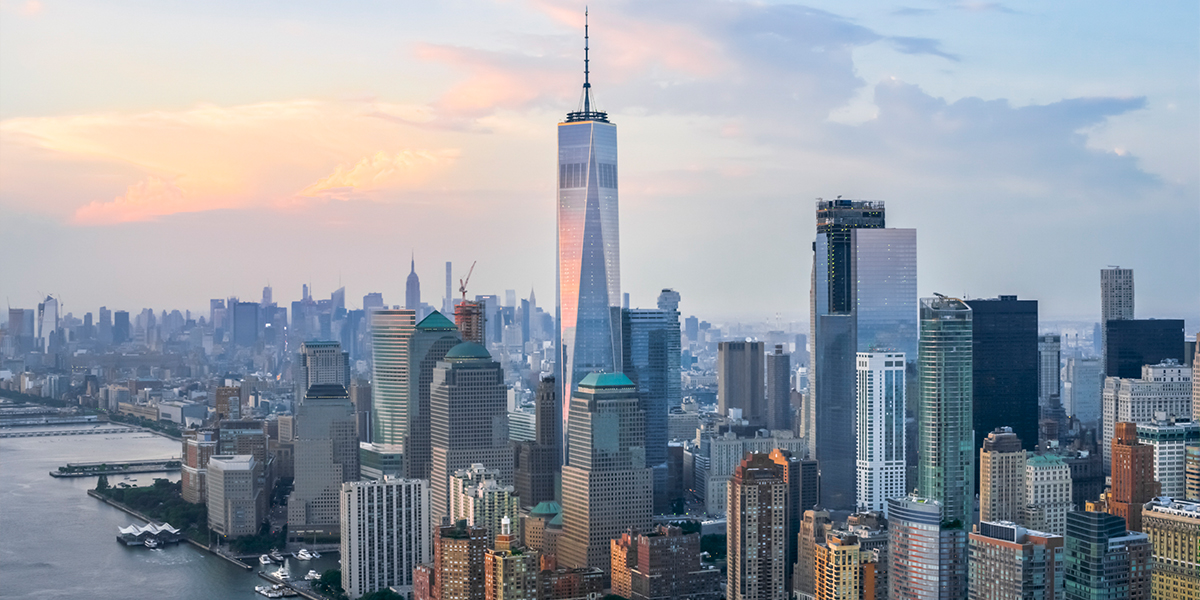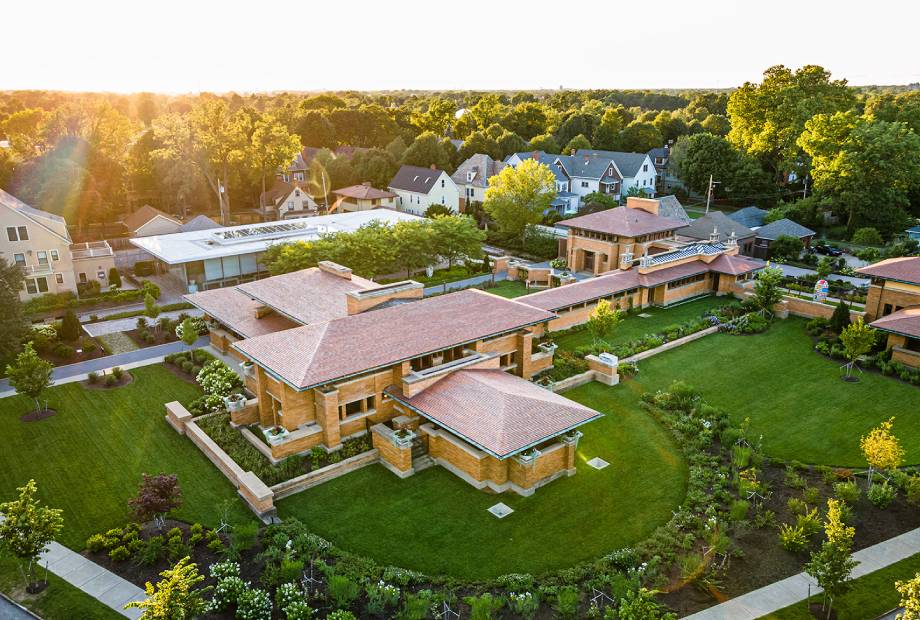Published November 18, 2022 • 7 Min Read
Day one: Buffalo, New York. Mausoleums and museums
New York state’s second-biggest city has four Wright sites worth visiting, including a mausoleum.
Day two: Lake Erie. Graycliff and Wright’s office
Stay another night in Buffalo, and make the 20-minute drive to Graycliff in the morning. Then follow the I-90 W along Lake Erie’s shores to visit the architect’s former office before ending the day near Fallingwater.
“No house should ever be on a hill or on anything. It should be of the hill. Belonging to it. Hill and house should live together, each the happier for the other.”Visit Greycliff, and you’ll see that philosophy come to life. 6. Frank Lloyd Wright’s office at the Erie County Historical Society-Hagen History Center Opened in 1951 Wright’s office originally stood on Grant Ave in San Francisco. A warm, wooded studio used until his death in 1959 is a glowing space showcasing Wright’s belief that “form and function should be one, joined in spiritual union.” Where to stay: Summit Inn Resort is three hours from Erie County Historical Society-Hagen History Center — so a bit of a drive — but you’ll wake up close to tomorrow’s destinations in the Laurel Highlands (dining is available at the resort).
Day three: Sidetrip to the Laurel Highlands
If you’re willing to leave NY for a day, there are 2 great buildings by FLW in Pennsylvania. Follow the meandering roads of western PA to visit Fallingwater and Kentuck Knob. Then stay overnight in a Frank Lloyd Wright home in Polymath Park.
Day four: The best of Museum Mile
Day four involves a good stretch of driving (334 miles along the I-76 and I-78 E), but it’s worth it. You’ll drive through woods and small towns along the way, then into Manhattan for the final two road trip stops — the Guggenheim Museum and the Frank Lloyd Wright installation at The Metropolitan Museum of Art. 9. Solomon R. Guggenheim Museum
Built 1956-1959
The Guggenheim and its graceful ivory curves are an icon of the Upper East Side.
The highlight of the interior is the main rotunda, which swirls beneath a grand skylight for 96 feet from top to bottom. Wright’s vision was that visitors would take an elevator to the top, then spiral down, absorbing the art on the walls as they descended.
Come early on a weekday, before the crowds, to experience the art and building as he imagined.
Fact: At one point, Wright was planning for the Guggenheim to be constructed from red marble (for he felt red was the colour of creation). Unfortunately for him, that idea was deemed too contentious to be built.
10. The Francis Little House II at the Metropolitan Museum of Art
Built 1912-14
The Metropolitan Museum of Art is big. Covering 2.2-million square feet if you include the measurements for each floor, this is one of the biggest art museums on Earth—featuring five-thousand years of work from across the globe. But you’re here to see the Francis Little House II, which you’ll find in Gallery 745 of the American Wing.
This room was initially an elegant living room in the Francis W. Little House in Minnesota. When the house was slated to be torn down in 1972, the Met moved in to save the design masterpiece.
Here, you’ll see Wright’s love of light and space exemplified by rows of leaded-glass windows running along the elegant walls.
Where to stay: Courtyard by Marriott New York Manhattan/Upper East Side and voco the Franklin New York are located near Museum Mile, meaning you can park and head to the Wright sites on foot if you wish.
Where to eat: Try Pastrami Queen on Lexington Avenue for pastrami on rye, Sushi Noz for Michelin-starred Japanese dishes, and the Met’s Cantor Roof Garden Bar for cocktails overlooking Central Park during the warmer months.
9. Solomon R. Guggenheim Museum
Built 1956-1959
The Guggenheim and its graceful ivory curves are an icon of the Upper East Side.
The highlight of the interior is the main rotunda, which swirls beneath a grand skylight for 96 feet from top to bottom. Wright’s vision was that visitors would take an elevator to the top, then spiral down, absorbing the art on the walls as they descended.
Come early on a weekday, before the crowds, to experience the art and building as he imagined.
Fact: At one point, Wright was planning for the Guggenheim to be constructed from red marble (for he felt red was the colour of creation). Unfortunately for him, that idea was deemed too contentious to be built.
10. The Francis Little House II at the Metropolitan Museum of Art
Built 1912-14
The Metropolitan Museum of Art is big. Covering 2.2-million square feet if you include the measurements for each floor, this is one of the biggest art museums on Earth—featuring five-thousand years of work from across the globe. But you’re here to see the Francis Little House II, which you’ll find in Gallery 745 of the American Wing.
This room was initially an elegant living room in the Francis W. Little House in Minnesota. When the house was slated to be torn down in 1972, the Met moved in to save the design masterpiece.
Here, you’ll see Wright’s love of light and space exemplified by rows of leaded-glass windows running along the elegant walls.
Where to stay: Courtyard by Marriott New York Manhattan/Upper East Side and voco the Franklin New York are located near Museum Mile, meaning you can park and head to the Wright sites on foot if you wish.
Where to eat: Try Pastrami Queen on Lexington Avenue for pastrami on rye, Sushi Noz for Michelin-starred Japanese dishes, and the Met’s Cantor Roof Garden Bar for cocktails overlooking Central Park during the warmer months.
Top photo credit to Matthew Digati via Martin House
This article is intended as general information only and is not to be relied upon as constituting legal, financial or other professional advice. A professional advisor should be consulted regarding your specific situation. Information presented is believed to be factual and up-to-date but we do not guarantee its accuracy and it should not be regarded as a complete analysis of the subjects discussed. All expressions of opinion reflect the judgment of the authors as of the date of publication and are subject to change. No endorsement of any third parties or their advice, opinions, information, products or services is expressly given or implied by Royal Bank of Canada or any of its affiliates.
Share This Article






